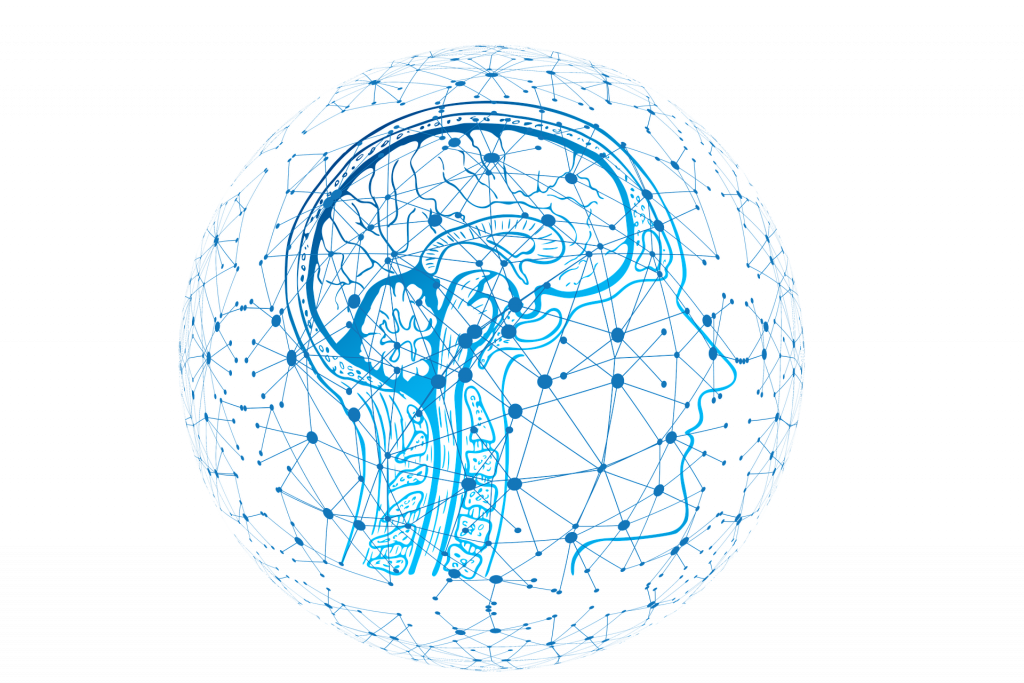
What is it?
Our Range of Treatment
- Low-grade astrocytomas
- Germ cell tumors (germinomas or teratomas)
- High-grade gliomas
- CSF-shunts
- Spinal tumors
- Endoscopic procedures
- Medulloblastomas
- Arachnoid cysts
- Ependymomas
- Hydrocephalus
- Neuronavigation-based endoscopic procedures
Childhood Brain Tumors
There are a large number of different types of brain tumors that can occur in different parts of the brain and at different stages of life. Brain tumors can occur in early childhood and it is at this time that they require the best possible treatment.
The most common brain tumors that occur in childhood include gliomas, tumors that originate from the neuroglia (= cells of the nervous tissue), (especially pilocytic astrocytomas) as well as medulloblastomas and ependymomas. About two-thirds of all CNS tumors (= of the central nervous system) in children are benign, meaning that they grow slowly and are often clearly distinguishable from the surrounding brain tissue.
Symptoms of the disease depend on the location and size of the tumor and can vary widely. Headaches, dizziness, seizures, nausea, vomiting and disturbances of consciousness are common. Therefore, to recognize the possibility of a brain tumor, especially in children, a fast and thorough diagnosis is necessary. If the suspicion is confirmed, the tumor must be surgically removed in most cases.
The diagnosis of a brain tumor means a great psychological strain for the families affected. This makes effective diagnosis and comprehensive treatment all the more important.
In addition to neurosurgical treatment of the tumor, our young patients often require further treatments such as radiotherapy, drug-based tumor therapy
and thorough neurological and socio-medical care. Thanks to the close interdisciplinary cooperation with the Children’s Clinic, the Oncology Center and the Clinic for Radiation Therapy and Radio Oncology, we are able to offer
a child-friendly and individually optimized medical therapy at every stage of treatment.
There are a large number of different types of brain tumors that can occur in different parts of the brain and at different stages of life. Brain tumors can occur in early childhood and it is at this time that they require the best possible treatment.
The most common brain tumors that occur in childhood include gliomas, tumors that originate from the neuroglia (= cells of the nervous tissue), (especially pilocytic astrocytomas) as well as medulloblastomas and ependymomas. About two-thirds of all CNS tumors (= of the central nervous system) in children are benign, meaning that they grow slowly and are often clearly distinguishable from the surrounding brain tissue.
Symptoms of the disease depend on the location and size of the tumor and can vary widely. Headaches, dizziness, seizures, nausea, vomiting and disturbances of consciousness are common. Therefore, to recognize the possibility of a brain tumor, especially in children, a fast and thorough diagnosis is necessary. If the suspicion is confirmed, the tumor must be surgically removed in most cases.
The diagnosis of a brain tumor means a great psychological strain for the families affected. This makes effective diagnosis and comprehensive treatment all the more important.
In addition to neurosurgical treatment of the tumor, our young patients often require further treatments such as radiotherapy, drug-based tumor therapy
and thorough neurological and socio-medical care. Thanks to the close interdisciplinary cooperation with the Children’s Clinic, the Oncology Center and the Clinic for Radiation Therapy and Radio Oncology, we are able to offer a child-friendly and individually optimized medical therapy at every stage of treatment.
Hydrocephalus in Children
Hydrocephalus is the collective term for all circulatory disorders of cerebral fluid (= brain water). As in adulthood, there are various causes that lead to an imbalance in the production and absorption of brain water. This increases the pressure in the skull and leads to the typical symptoms. It is important to detect these early to avoid permanent damage.
In a chronic hydrocephalus, in addition to a tense fontanel (= bone/cartilage-free area of the skull of a newborn), head growth outside the percentile (norm) is soon noticeable. Only later there is a significant developmental delay, visual disturbances due to papilloedema (= swelling of part of the optic nerve) and the so-called “sunset phenomenon” as a sign of neuronal damage. The latter refers to the partial disappearance of the iris behind the lower eyelid, so that the iris appears like a setting sun.
Causes in pediatrics are often peripartum (= during, shortly before or after birth) bleeding into the ventricular system (= cavity system inside the brain; also: cerebral ventricles) or tumors, which can cause a blockage of the liquor drainage pathways and a disturbance of the liquor resorption. Liquor here refers to the body’s own fluid, also called brain fluid, that circulates in the cavity systems. Thus, temporary puncture chambers can be implanted in the cerebral ventricles in cases of internal bleeding. Through these puncture chambers, a small amount of CSF (= cerebrospinal fluid or “liquor”) can be removed daily until the bleeding is absorbed into the blood or lymphatis.
The classic treatment for hydrocephalus is the installation of a ventriculo-peritoneal shunt (VP shunt). This means the establishment of a connection between cerebral ventricle and the abdominal cavity via a thin, subcutaneous (= lying under the skin) tube in conjunction with a valve to shunt (= drain) the CSF. Although technology has evolved in recent decades, these shunt systems are still prone to blockages and infections. For this reason, such “foreign body implantation” always remains the last choice.
In cases of an occlusive hydrocephalus (congenital or acquired aqueductal stenoses, in this case: narrowing in the connecting passages of the cavities), the implantation of the tube can be avoided. Instead, a short-circuit connection of the liquorflow can be established endoscopically without the need to implant a foreign body. During the so-called ventriculocysternostomy, a connection between the 3rd ventricle and basal cisterns (= fluid-filled cavities) is established by means of neuronavigation-supported endoscopy.
Rarely, endoscopic aqueductoplasties is necessary; i. e. surgical extension
(or drainage system) in the aqueduct (= narrowing of the cerebrospinal fluid system) between the 3rd and 4th ventricles.
Due to the comparatively high risk of neurological deficits, this procedure is only performed if the clinical picture corresponds to the isolated 4th ventricle. In this case, the 4th ventricle is cut off from the other CSF chambers e.g. by postmeningitic membranes (inflammatory areas of the cerebral membrane) and the CSF production in this area leads to the development of a progressive hydrocephalus of the posterior cranial fossa.
Hydrocephalus is the collective term for all circulatory disorders of cerebral fluid (= brain water). As in adulthood, there are various causes that lead to an imbalance in the production and absorption of brain water.
This increases the pressure in the skull and leads to the typical symptoms. It is important to detect these early to avoid permanent damage.
In a chronic hydrocephalus, in addition to a tense fontanel (= bone/cartilage-free area of the skull of a newborn), head growth outside the percentile (norm) is soon noticeable. Only later there is a significant developmental delay, visual disturbances due to papilloedema (= swelling of part of the optic nerve) and the so-called “sunset phenomenon” as a sign of neuronal damage. The latter refers to the partial disappearance of the iris behind the lower eyelid, so that the iris appears like a setting sun.
Causes in pediatrics are often peripartum (= during, shortly before or after birth) bleeding into the ventricular system (= cavity system inside the brain; also: cerebral ventricles) or tumors, which can cause a blockage of the liquor drainage pathways and a disturbance of the liquor resorption. Liquor here refers to the body’s own fluid, also called brain fluid, that circulates in the cavity systems.
Thus, temporary puncture chambers can be implanted in the cerebral ventricles in cases of internal bleeding. Through these puncture chambers, a small amount of CSF (= cerebrospinal fluid or “liquor”) can be removed daily until the bleeding is absorbed into the blood or lymphatis.
The classic treatment for hydrocephalus is the installation of a ventriculo-peritoneal shunt (VP shunt). This means the establishment of a connection between cerebral ventricle and the abdominal cavity via a thin, subcutaneous (= lying under the skin) tube in conjunction with a valve to shunt (= drain) the CSF.
Although technology has evolved in recent decades, these shunt systems are still prone to blockages and infections. For this reason, such “foreign body implantation” always remains the last choice.
In cases of an occlusive hydrocephalus (congenital or acquired aqueductal stenoses, in this case: narrowing in the connecting passages of the cavities), the implantation of the tube can be avoided. Instead, a short-circuit connection of the liquorflow can be established endoscopically without the need to implant a foreign body.
During the so-called ventriculo-cysternostomy, a connection between the 3rd ventricle and basal cisterns
(= fluid-filled cavities) is established by means of neuronavigation-supported endoscopy. Rarely, endoscopic aqueductoplasties is necessary; i. e. surgical extension (or drainage system) in the aqueduct (= narrowing of the cerebrospinal fluid system) between the 3rd and 4th ventricles.
Due to the comparatively high risk of neurological deficits, this procedure is only performed if the clinical picture corresponds to the isolated 4th ventricle. In this case, the 4th ventricle is cut off from the other CSF chambers e.g. by postmeningitic membranes (inflammatory areas of the cerebral membrane) and the CSF production in this area leads to the development of a progressive hydrocephalus of the posterior cranial fossa.

